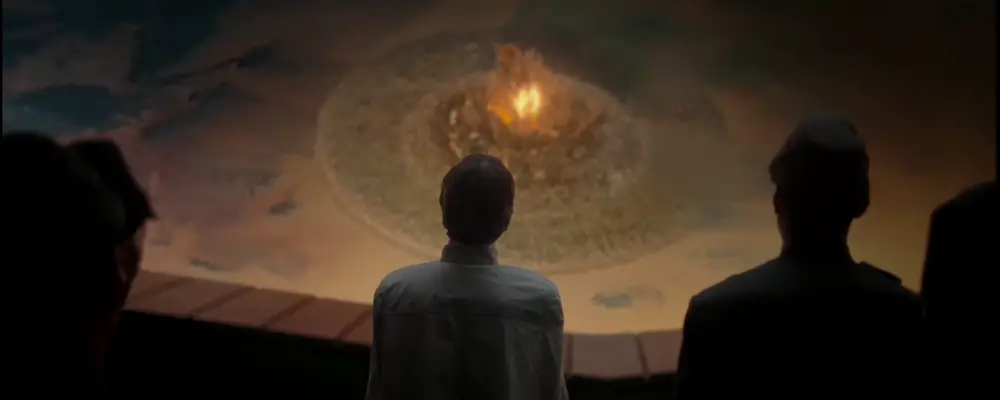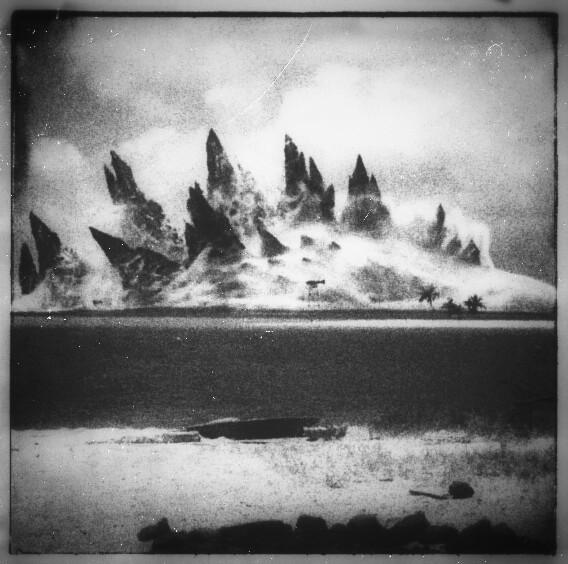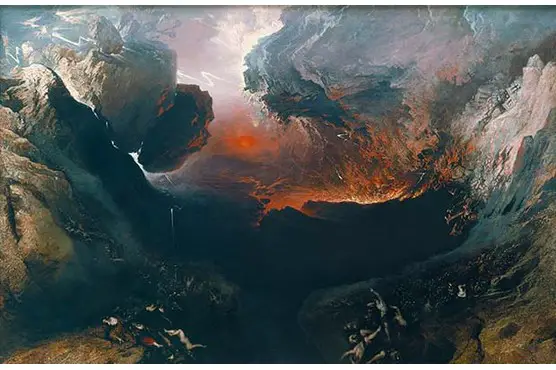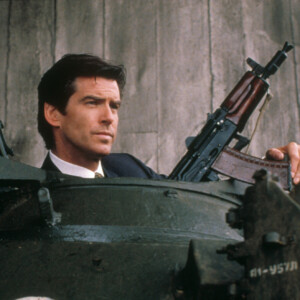How ILM Created The Death Star’s “Beautiful” Destruction Of Jedha City In ‘Rogue One’
Minutes after the Death Star destroys Jedha City with a single reactor ignition, Director Krennic marvels at the destruction. “It’s beautiful,” he says. Indeed, the sequence is the most visually arresting sequence in Rogue One with each shot a work of art.
The sequence starts with the reveal of the Death Star from the dark side of Jedha as it obits above the orange and purple landscape below. Then as the planet-killer eclipses Jedha’s Sun, the brilliant blue sky is cast into darkness, a visual metaphor for what is about to happen. Moments later a single green blast pierces the darkened sky causing an orange-yellow fireball on the horizon. The sequence is capped off with the crew of Rogue One narrowly escaping a tsunami of earth-toned rock and rubble generated by the blast.
The whole sequence is awe inspiring, yet its also unsettling to agree with Krennic that this catastrophe is indeed beautiful to watch.

However, it seems that this was the intention of director Gareth Edwards from the beginning, and its no accident each shot looks like a painting. The director gave ILM’s VFX supervisor, John Galloway, the brief to study the work of 19th Century Painter, John Martin, alongside the examination of nuclear explosions to create those remarkable scenes in Rogue One.
Watching the sequence you can see the influence of nuclear test footage. The explosion on the horizon as viewed from the planet’s surface, and also far above from the bridge of the Death Star recall the real-life explosions recorded at test sites. Even the tsunami of rubble–an effect unique to the Death Star–is influenced by test footage.
“[T]here’s one point when Saw Gerrera (Forest Whitaker) looks out the window and he sees the result of this, and the point is it’s not actually a nuclear explosion we’re seeing, it’s the start of some giant event,” Galloway explained at London’s VFX Festival in 2017.
“And it’s very, very far off in the distance. And we really just wanted to communicate the sort of apocalyptic mood of that. And we came across this particular image. It’s a photo of a nuclear bomb test called Castle Bravo. And it’s taken in 1954. Now, nothing about the color or exposure of this is representative of how this might look in real life.

Photograph of the explosion of the Castle Bravo nuclear test in 1954.
“But there’s something so beautiful and moody about it, and it also sort of linked to the greens of the Death Star laser fire itself. So we took this as a sort of direct reference to create that nice….not nice, but apocalyptic feel.”
Edwards suggested they look at the paintings of Victorian painter, John Martin, to add to the aesthetic.
“Some of you may be familiar with John Martin – he was a 19th-century English Romantic painter, and you can see a lot of his work in the Tate Britain. And you can see that again, we’re following similar themes here, but Gareth was very keen to get that sort of sense of apocalyptic doom.
“So we used that very much to drive the look and style and palette of our comps, and you can see lightning in the top left corner of the [finished shot that] is a direct nod to those paintings and that style.”

John Martin’s ‘The Great Day of His Wrath’ (1853), a key inspiration Jedha City’s destruction.
Youu can see the influence of Martin’s painting, ‘The Great Day of His Wrath’ (1853) in this still from the final sequence in Rogue One.

The parallels to the creation of the atomic bomb are clear in Rogue One.
The plot echoes the true story of J. Robert Oppenheimer and his creation of the atomic bomb. After viewing the first detonation of his weapon on July 16, 1945, he thought of the line from the Bhagavad Gita, “Now I am become Death. The Destroyer of worlds.” He regretted his creation for the rest of his life.
In a similar way, Galen Erso, regrets his design of the Death Star. The only reason he continued to work for the Empire was because someone else would take his place if he didn’t. That way he could build an undetectable weakness into the battle station that the Rebellion can find in the stolen Death Star plans. His daughter, Jyn Erso, learns of this flaw from a holographic message from her father, just moments before she is forced to escape from the destruction of Jedha City nearby.
The final sequence makes us reflect in a powerful never experienced before in a Star Wars film.


